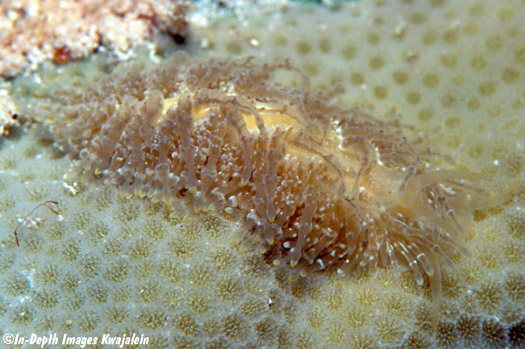
Tenellia lugubris can be found often if you look in the right places. It eats Porites corals and usually hides underneath them during the day. We find them most often under colonies of Porites that are either living loose on the bottom (maybe growing on or engulfing small rocks) or have broken free from the reef and fallen, usually on their sides or upside down. Occasionally, Tenellia minor or Embletonia gracilis share the same Porites colony. We have seen T. lugubris at Enewetak and Kwajalein Atolls on intertidal reefs, lagoon pinnacles, and on the seaward slope to depths of about 25m. John and Lynette Flynn also record specimens from Rongelap, and Stan Jazwinski has found them at Ailinglaplap. This species was long known as Phestilla lugubris and some references still put it there, but molecular data from Cella et al (2016) indicates that species of Phestilla belong in Tenellia. The photo immediately below shows an individual on living Porites. Tenellia lugubris was first reported in the Marshalls from Enewetak Atoll as Phestilla lugubris by Switzer (1971).

The underside of the Porites colony is usually dead and white, and this is where the nudibranchs deposit their white, flowery egg masses.
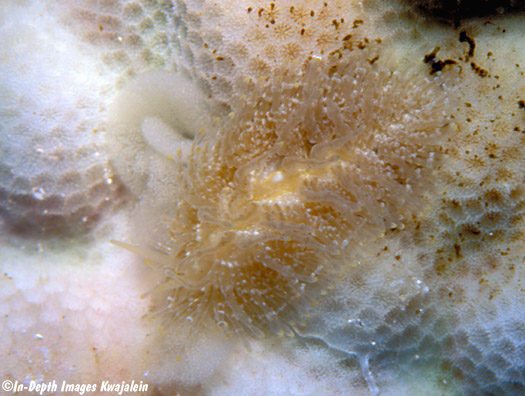
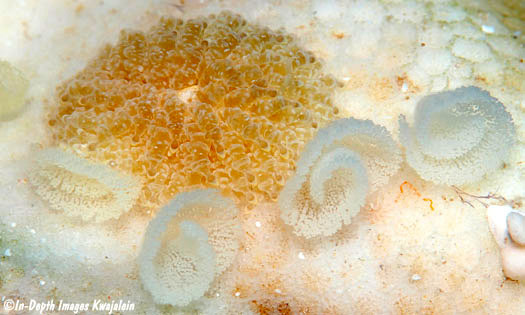
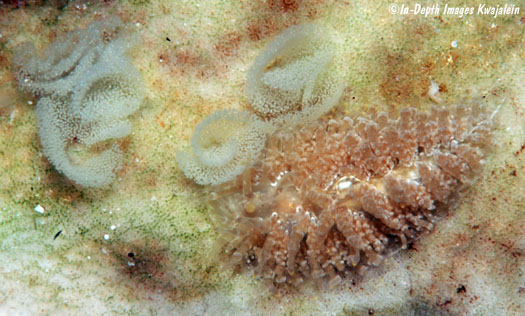
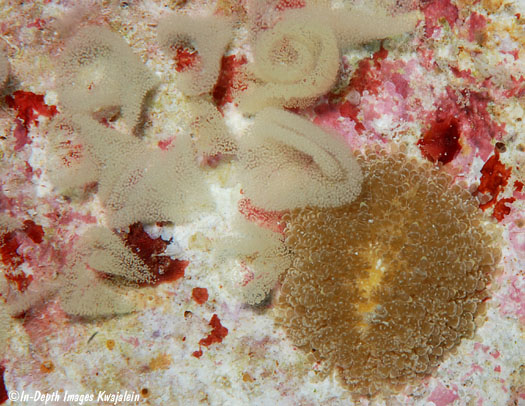
When resting, the animal would be easy to mistake for a sea anemone.
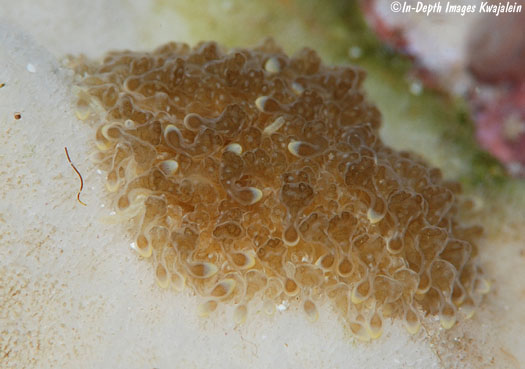
There's a tiny juvenile in the lower left of the photo below.
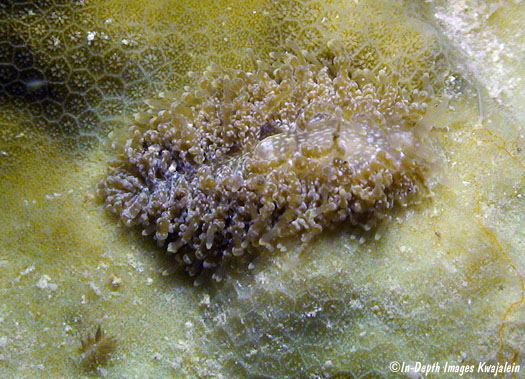
Surrounded by egg masses.
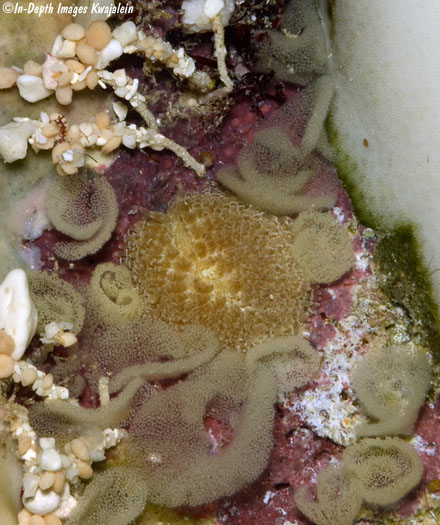
Speciments with a bit more yellow on the tips of the cerata, and much yellower eggs.
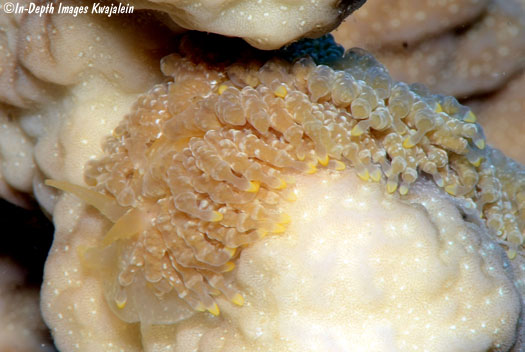
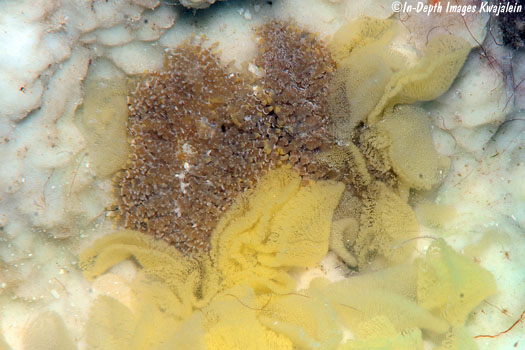
A specimen on a grazed patch of Porites rus.
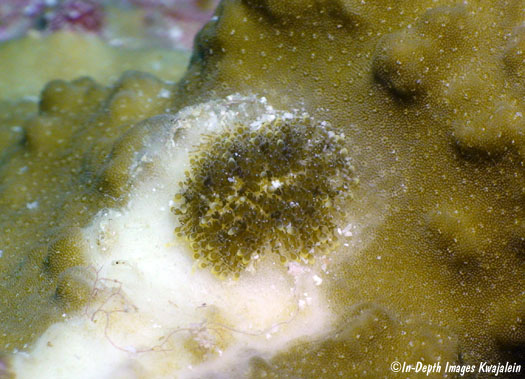
The Ailinglaplap specimen photographed by Stan Jazwinski is below.
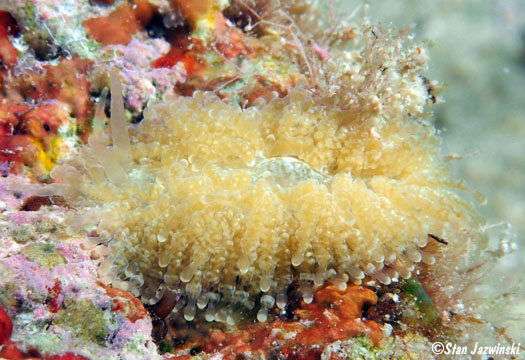
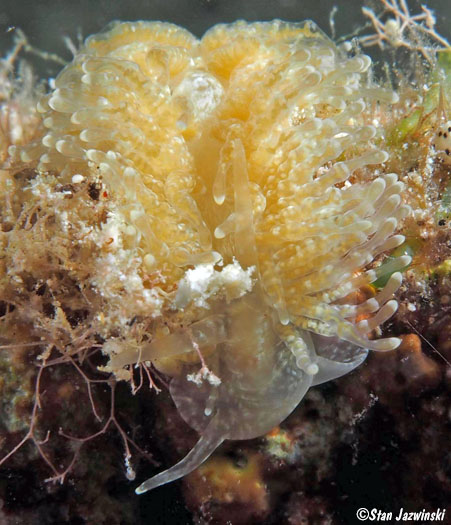
We also have Tenellia lugubris from several other areas, including Hawaii and the Solomons.
Created 8 January 2007
Updated 14 August 2021